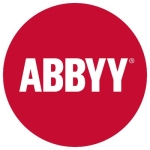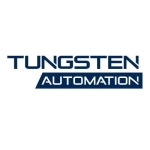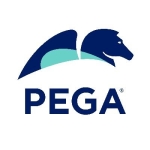What is our primary use case?
I was working for an airline client that had their processes in the mainframe. The application Sabre that they had was all terminal-based. It was very difficult to navigate and capture everything. We automated a lot of tasks related to validation. For example, when someone booked a flight ticket and tried to cancel it, they needed to give some reason. We had rule-based validation, so we had to validate the reasons and assess them. Previously, it was all manual and terminal-based, and then we used Automation Anywhere to automate.
We also used Automation Anywhere to do a lot of PO manipulation. It was done in an application called Coupa. We used to do that automation with APIs. API automation was very easy with Automation Anywhere. We used it to automate such tasks.
How has it helped my organization?
Automation Anywhere was introduced as an RPA tool to facilitate the digital transformation journey of the client organization. They wanted to eliminate a lot of manual tasks and provide quality work for their employees rather than them doing manual activities. They also wanted to make sure that a process was in place. They wanted a very low code or no code automation so that even business people could upscale themselves and automate. They wanted to free up their employees from such manual tasks and have a lot of bandwidth to do some other research.
In the use case related to the cancellation of a ticket, a lot of things have to be handled. When you cancel a ticket, the airline has to make an update at a lot of places. Only then you would get the refund. It involves a lot of processes. They could be related to the meal or something else. Even if you have not subscribed to any add-ons, all the checkboxes have to be ticked, and only after everything is cleared, you get your refund. Before automation, the refund process was very tedious. When they were doing it manually, any mistake could lead to incorrect transactions. For example, they might end up transferring a different amount. It was a very tedious process, and it was handled with the Sabre application, which was not very user-friendly. It was mostly a terminal-based mainframe application. It had a user interface, but a person with good experience was required for it. A fresher or somebody less experienced could not do it. You needed to know where exactly to go, and there were a lot of things that you had to learn to do this process. It was always done by an experienced engineer, and it was very manual involving navigating different screens. During COVID-19 times, there was a shortage of employees, and the airline was handling a lot of regulations, so this manual process became more problematic. At that time, we introduced Automation Anywhere. We were targeting only 50% automation, but we were able to automate 80% to 90%. It significantly improved the time to process a request and reduced the dependency on a senior engineer for the process. The robot could handle the process. We had programmed the robot. It was a very good experience. It helped the client navigate through tough times.
When you decide to automate a process, you try to understand the process in and out. You try to understand the exception scenarios and how to solve them. You prepare a process discovery document. While doing this documentation, you try to streamline the process because Automation Anywhere, as a tool, needs to be configured to automate that process. It forces us to ask a lot of questions, such as what if the file to be downloaded is not there. You come across all such things at the initial phase. That helps a person to restructure the process and fine-tune it more strategically. It saves a lot of time. It has plenty of features to do Excel operations. It has a lot of capability for querying. You can read data from Excel and process it using a query. You do not have to do Excel operations one by one. It is very quick. If a person is taking 30 minutes to do the operation, it takes only seconds or minutes to finish it. It provides a lot of efficiency.
You also have a lot of traceability. You have a lot of logs. You can see what happened after a process. When you have an audit, you have some traceability. A person doing a task does not always document each and every step. He or she would just do the task and finish it off. When you automate the process with Automation Anywhere, because the robot is doing the tasks, you get a lot of logs and a lot of traceability for auditing.
At the initial stages of automation, you also redefine and optimize a process. Instead of downloading 4 Excel files at different places, you try to standardize it. You give a standard name and a standard path. Everything is standardized, and a lot of focus is put on security and data privacy. We are very conscious of not saving it at any location that is accessible to anybody else. Subconsciously, we do all these checks. It improves the security and data privacy aspects. It also leads to process optimization. Like any RPA tool, it saves a lot of time, and it is efficient, and then logs are there as a good source of tracking.
Automation Anywhere is easy. It takes one to two weeks to introduce a non-technical person to this solution. They already have good domain knowledge, and they just need to know how to work with the tool. In about a week, we will be able to train them in basics. We can show them the interface. We can show them what goes where, but they will not be able to develop full automation or know about full RPA coding. They can get the basic knowledge in one to two weeks. Full training will require building a use case. It could be a small use case. If a developer would take four weeks, which includes development, testing, and other things, a non-technical person would require eight weeks. Only then a person will be able to learn completely and become a very good developer.
In terms of integration, there was SAP integration and Sabre integration. There was one more application. I worked only with these applications. If there is a component available, the integration goes smoothly. When you want to go for something customized and you try to build an integration, it is very challenging, but that is common with all the tools. When you try an out-of-the-box integration, it is very easy because they would have already tested that it is working. When you try to build something or customize it, that is when the challenges come. I have seen plenty of challenges with Automation Anywhere when you go for something that is not there in the package. You need a lot of support from the team and a lot of effort. The security restrictions from the organization were also stopping the integration. It was not happening. A lot of errors came, and we had to reach out to the network team and the security team. There were networking and security issues that had to be resolved.
Automation Anywhere has saved time and costs, but I do not have the metrics.
What is most valuable?
I have not used the recent versions, but it provides a great way to automate. Excel automation is quite valuable. Initially, it was only there in Automation Anywhere. It was not very popular with other automation tools. Excel automation is a very good feature. A lot of back-office activities happen in Excel. It is a very needed feature that Automation Anywhere provides.
In 2021, Automation Anywhere switched from on-premises to cloud. They renamed it as A360. They brought the required changes with this version. Before that, they used to have a line-by-line code view. They did not have a flowchart diagram, but it was very much needed. Because it was low code, a pictorial representation of the code was something that was missing in Automation Anywhere. It was there in UiPath and Power Automate at the time. Automation Anywhere then introduced two views. That gave people the option to use the view that they were comfortable with. That was a very brilliant move. Having two options made it very accessible.
It is very user-friendly. The AI capability that nowadays I am seeing in Automation Anywhere is very good. They have plug-and-play AI solutions. You do not need to know a lot about coding or AI to implement AI in your automation. You can just use their plug-and-play solutions. That is where its real strength is.
What needs improvement?
Automation Anywhere is easy, but the Automation Anywhere courses are not so easy. All RPA tools have their own academy where business users can go and learn the solution and do things themselves. Automation Anywhere courses are a little bit complex to understand. You need a little bit more time, and accessibility is also a little bit of an issue. They should focus a bit more on the academy and learning materials on their portal. The content should be easy to understand. It is not easy to grasp for a non-technical person. It should be easy for citizen developers. Also, their certification is very costly.
There should be more visibility as an RPA product. Every organization is trying to stick with certain tools. I like Automation Anywhere, and I would like to work with it, but I am not getting an opportunity. Automation Anywhere is not promoting itself to other organizations. Organizations are moving towards Power Automate and UiPath. It could be because Automation Anywhere is not reaching out to companies.
Their community events are also less. There are not many developer events in the cities where IT is there. In Bangalore, India, most of the IT companies are there, so we get to go to a lot of conferences. We get to hear a lot from other vendors, but Automation Anywhere's events are very limited. They should take care of their presence in the community and companies.
They should introduce videos for the new features. They should promote new features. They should be known to people. They should be accessible to people. Only then developers or companies will know about it. Only then, it will get used. There are probably plenty of good features, but they are not known or explored.
For how long have I used the solution?
I worked with Automation Anywhere for 2 years.
What do I think about the stability of the solution?
It is a stable product. I would rate it a 7 out of 10 for stability. It is not a perfect product, but it is improving every day.
What do I think about the scalability of the solution?
It is not very scalable. I would rate it a 6 out of 10. After you have built your robot, if you want to make some changes, you can do that, but if you built a robot and you want to make it an AI-enabled robot, it is quite a challenging task.
There were many users of this solution. I was a part of the Center of Excellence. The finance team and HR team were also trying to use it. There were more than 50 people for this solution.
How are customer service and support?
I was getting good support from them. I would rate them a 9 out of 10. They were always very helpful to me. My colleagues have had a bit of a bad experience, but I did not. I have raised a few tickets, and every time, the person was attentive and helped me out. They were very patient. They were straight to the point. They knew the technology.
How would you rate customer service and support?
Which solution did I use previously and why did I switch?
I am working with UiPath and Power Automate. Automation Anywhere has got its own benefits and its own strong points, and the same is applicable to other vendors. It is just about which one your organization is aligned with and which one your organization has chosen to go forward with. However, other vendors are better in terms of reach. Even if I am not working on Power Automate for six to seven months, I get to learn about it. I see a lot of things on LinkedIn. There are communities where I can go to learn and keep myself updated, whereas, about Automation Anywhere, I do not see much information. I have to exclusively go and spend a lot of time to find the information. That is where I see the difference.
How was the initial setup?
It was on-prem before, and then we migrated to A360. It was already deployed when I joined, so I do not know about it, but migration took 4 to 5 months.
There were 4 people mainly focusing on migration. It was a bit complex because it was new, and there was not a lot of material available online. It was a little complex, but later, it became smooth. We reported a lot of bugs, and other people also reported them. It was very smooth.
What's my experience with pricing, setup cost, and licensing?
It is cost-efficient in terms of licensing. I found their support good when I was working for the airline client. However, I hear from my managers here that the support price for Tier 3 or premium is a little higher. That is why we are not going for Automation Anywhere. Its price was okay for our client, but for us, it seems expensive.
Which other solutions did I evaluate?
Automation Anywhere was a tool that was decided by our client. They were very much satisfied with how work was progressing. It gave them faster results, and it helped them navigate through the Covid-19 situation.
What other advice do I have?
I would recommend Automation Anywhere. It is a very solid product. I have always vouched for it. I see a lot of potential because it is very easy and it was a stable product when I was working with it. They were very careful about their releases. They were not releasing a lot of things, which is something I see in other products. With Automation Anywhere, each release is very carefully tested.
They introduce new features, but I have noticed that in India, the market for Automation Anywhere is not very big. I am not getting to work on Automation Anywhere because companies are moving to Power Automate and UiPath, so I am not able to learn it more. It is difficult to get hold of this solution.
In terms of our organization’s perspective when it comes to automation and AI, specifically Generative AI (GenAI), we want about 50% of the income coming from IT and services. Automation and AI are placed at the top of the strategy. We are moving towards RPA plus AI and ML. It is almost like hyperautomation or intelligent automation. This is one focus area, and another one is Pure Generative AI and data. The data part is handled by a different organization. We are looking into how to drive insights from data analytics and how to leverage the GenAI technology outside and derive value from it. These are highly focused areas.
I would rate Automation Anywhere an 8 out of 10. I liked working with it.
Disclosure: My company has a business relationship with this vendor other than being a customer. Partner




















